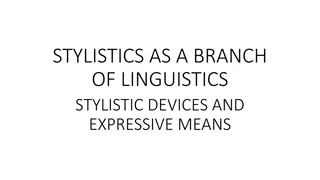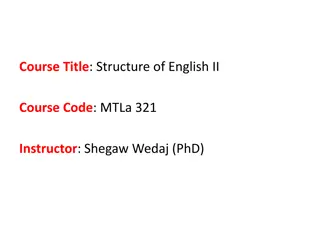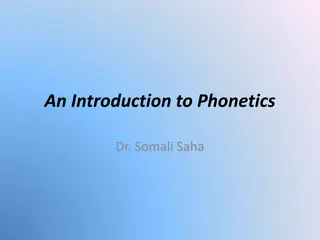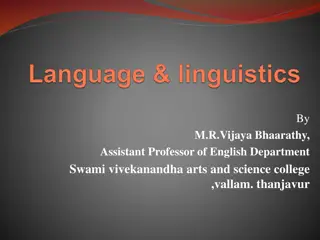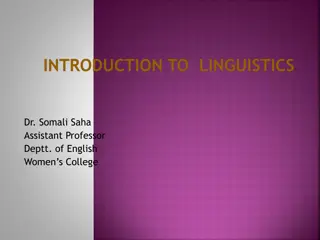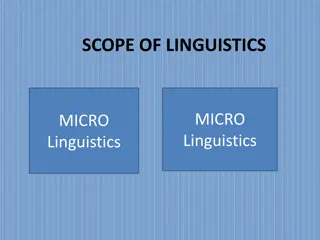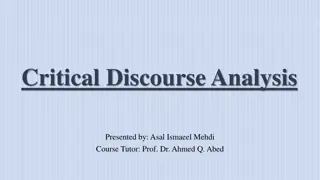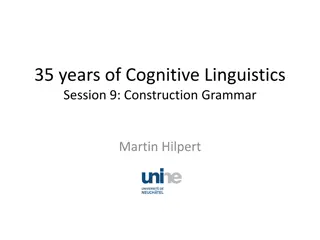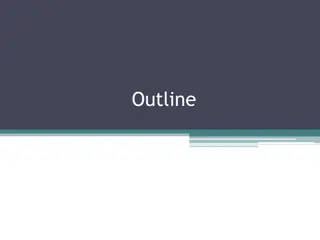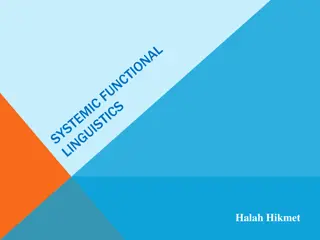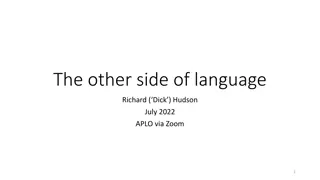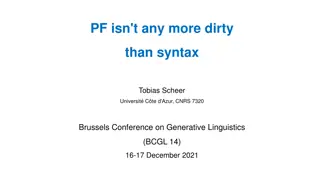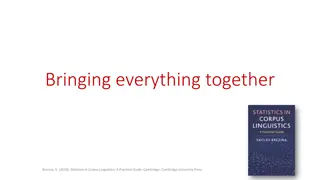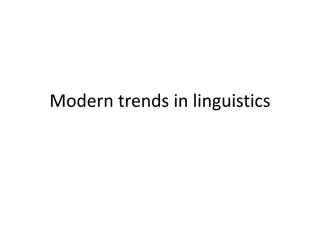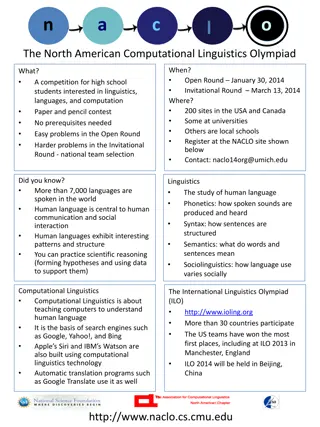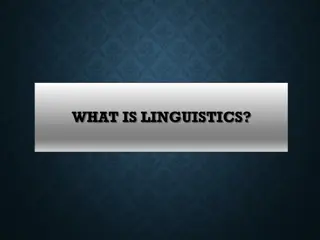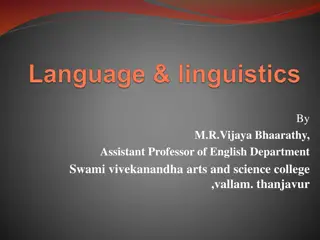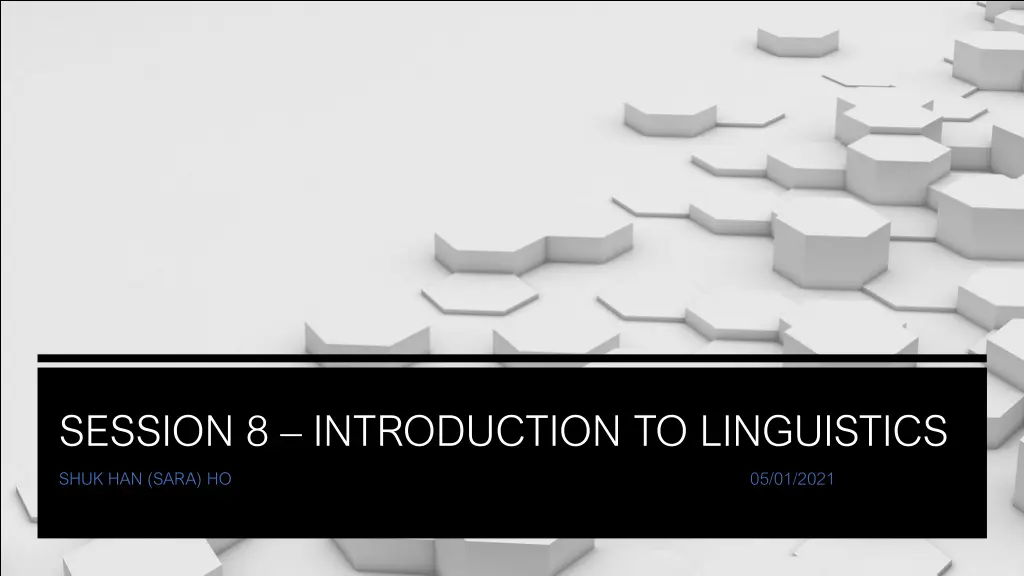
Introduction to Linguistics Terminologies & Homework Analysis
Explore key linguistic terminologies including clauses, complements, adjuncts, and semantic roles through practical examples. Dive into homework questions to distinguish between complements and adjuncts, identify semantic roles in phrases, and analyze complementation patterns with various verb structures.
Download Presentation

Please find below an Image/Link to download the presentation.
The content on the website is provided AS IS for your information and personal use only. It may not be sold, licensed, or shared on other websites without obtaining consent from the author. If you encounter any issues during the download, it is possible that the publisher has removed the file from their server.
You are allowed to download the files provided on this website for personal or commercial use, subject to the condition that they are used lawfully. All files are the property of their respective owners.
The content on the website is provided AS IS for your information and personal use only. It may not be sold, licensed, or shared on other websites without obtaining consent from the author.
E N D
Presentation Transcript
SESSION 8 INTRODUCTION TO LINGUISTICS SHUK HAN (SARA) HO 05/01/2021
TEST 7 [PP after 18 years] [PP at check out counter] [PP after [18 years at check out counter]] The headline is ambiguous because we do not know how many adjunct adverbials there are. The headline is ambiguous because we do not know whether the second PP is part of the first or not. Two sisters reunited after 18 years at checkout counter! This newspaper headline is involuntarily funny because it is structurally ambiguous.
TERMINOLOGIES CLARIFICATION Clause: a unit of speech that has a main verb. Simple sentence = 1 Clause; Complex Sentence > 1 Clauses SS: I am eating an apple. // A haze of greenish smoke was hovering over the scene. CS: I am eating an apple while John is watching TV. // She thought that he believed that she had lied. Syntactic form / Phrase Type: NP, VP, PP, AdjP Syntactic Function: Subject, Object, Complement, Adjunct Semantic Function/Role: Agent, Recipient, Theme
HOMEWORK 1. What is the difference between complements (i.e., arguments) and adjuncts? Are the following phrases complement or adjunct? Complements: Necessary to the clause, without complements the clause is incomplete Adjuncts : Can be omitted without having an incomplete clause Complement My father is a teacher. i. ii. Tom hit Jerry. Complement iii. We left as soon as we have finished breakfast. Adjunct iv. Little James seemed very happy. Complement v. He was sitting on the table. Adjunct
HOMEWORK 2. TIME) of the following phrases: Identify the semantic roles (AGENT, PATIENT, THEME, INSTRUMENT, RECIPIENT, EXPERIENCER, MANNER, PLACE, PATIENT vi. Jack ate the beans. AGENT vii. Jerry was hit by Tom. viii. The picture hangs above the fireplace. PLACE RECIPENT ix. He brought me a car. x. I received some money from my mum. THEME xi. John saw a movie last night. EXPERIENCER
COMPLEMENTATION PATTERN/ ARGUMENT STRUCTURE Intransitive: Take only one argument//complement, i.e. subject e.g. sleep, walk, dance Transitive: Take two arguments//complements, i.e. subject & object e.g. eat, drink, have Di-transitive: Take three arguments//complements, i.e. subject & two objects e.g. give, make, pay (Complex-transitive: take more than three arguments, e.g. bet)
HOMEWORK 3. As mentioned in the reading, most verb can be used in more than one complementary patterns/argument structures. Try to analyse the complementary patterns of these sentence with the verb dance. e.g. They danced a waltz. DANCE < Agent, Theme> xii. They danced. DANCE <Agent> // DANCE <dancer> xiii. They danced the judge a waltz. DANCE <Agent, Recipient, Theme> // DANCE <dancer, audience, dance> xiv. They danced across the room. DANCE <Agent, (Place)> // DANCE < dancer, (location)>
HOMEWORK 4. Segment the following sentence into constituents. For each constituent, give, (a) the phrase type, (b) the syntactic function and (c) the semantic function. She sneezed the foam off the cappuccino. She sneezed the foam off the cappuccino NP VP NP PP a)Phrase type b) Syntactic Function c) Semantic Function Subject EXPERIENCER Verb Object THEME/PATIENT Complement PLACE

